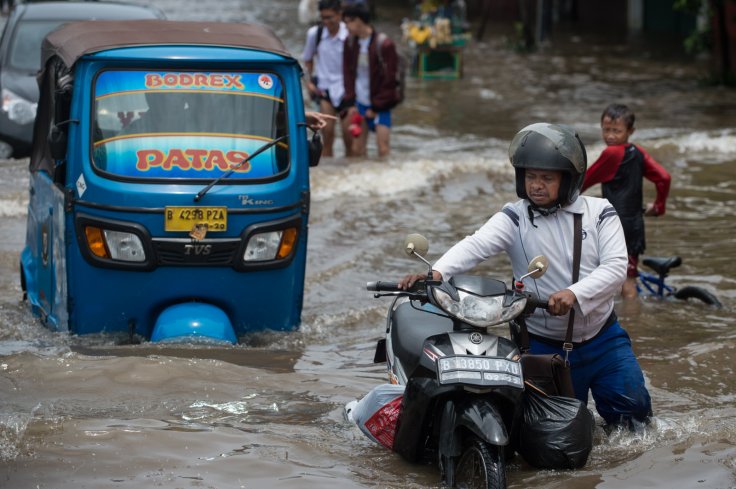With no respite from the heaviest rainfall ever recorded, that has led flash floods and landslides in the capital, Indonesia is set to carry out cloud seeding over the city to prevent more rainfall.
The country's disaster mitigation agency said that as of Friday, the death toll in Jakarta and surrounding areas rose to 43. Also, thousands have been displaced due to the damage caused to the unprecedented rainfall. The toll increased from 30 on Thursday night.
One of the worst rainfalls ever recorded
The floods followed torrential rains on Dec. 31 and into the early hours of New Year's day that inundated swathes of Jakarta and nearby towns, home to about 30 million people.
The deluge at the start of 2020 was "one of the most extreme rainfall" events since records began in 1866, the country's Meteorological, Climatological and Geophysics Agency (BMKG) said in a statement on Friday. The agency said climate change has increased the risk of extreme weather.

With more rain forecast, two small planes have been readied to break up potential rain clouds in the skies above the Sunda Strait, while a bigger plane will be on standby, Indonesia's technology agency BPPT said in a statement.
"All clouds moving toward the Greater Jakarta area, which are estimated to lead to precipitation there, will be shot with NaCl (sodium chloride) material," the agency said. "Hopefully they will break before they reach the Greater Jakarta area."
Turning to cloud seeding for respite
Cloud seeding, or shooting salt flares into clouds in an attempt to trigger rainfall, is often used in Indonesia to put out forest fires during the dry season. The BMKG has warned that "extreme weather" may continue until Jan. 7, while heavy rainfall could last through to mid-February.
Television footage on Friday showed floodwaters still inundating some areas of Southeast Asia's largest city. Authorities on Thursday used hundreds of pumps to suck water out of residential areas and public infrastructure, like railways.
President blames delay in infrastructure development
President Joko Widodo blamed delays in flood control infrastructure projects for the disaster, including the construction of a canal that has been delayed since 2017 due to land acquisition problems.
Widodo last year announced he will move Indonesia's capital to East Kalimantan province on Borneo island, to reduce the burden on Jakarta, which is overpopulated and sinking.
More than 50 people died in one of the capital's deadliest floods in 2007 and five years ago much of the center of the city was inundated after canals overflowed.









